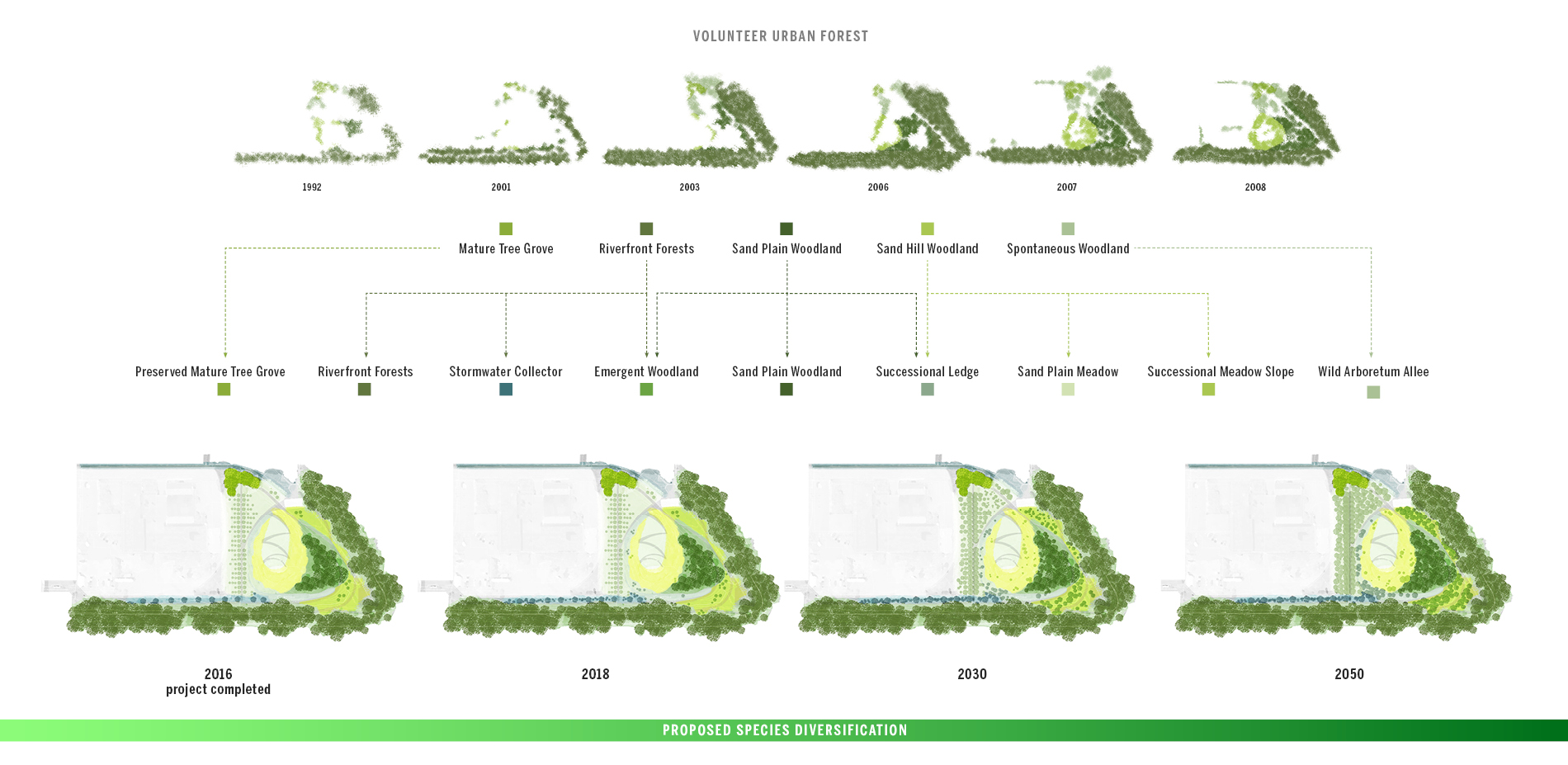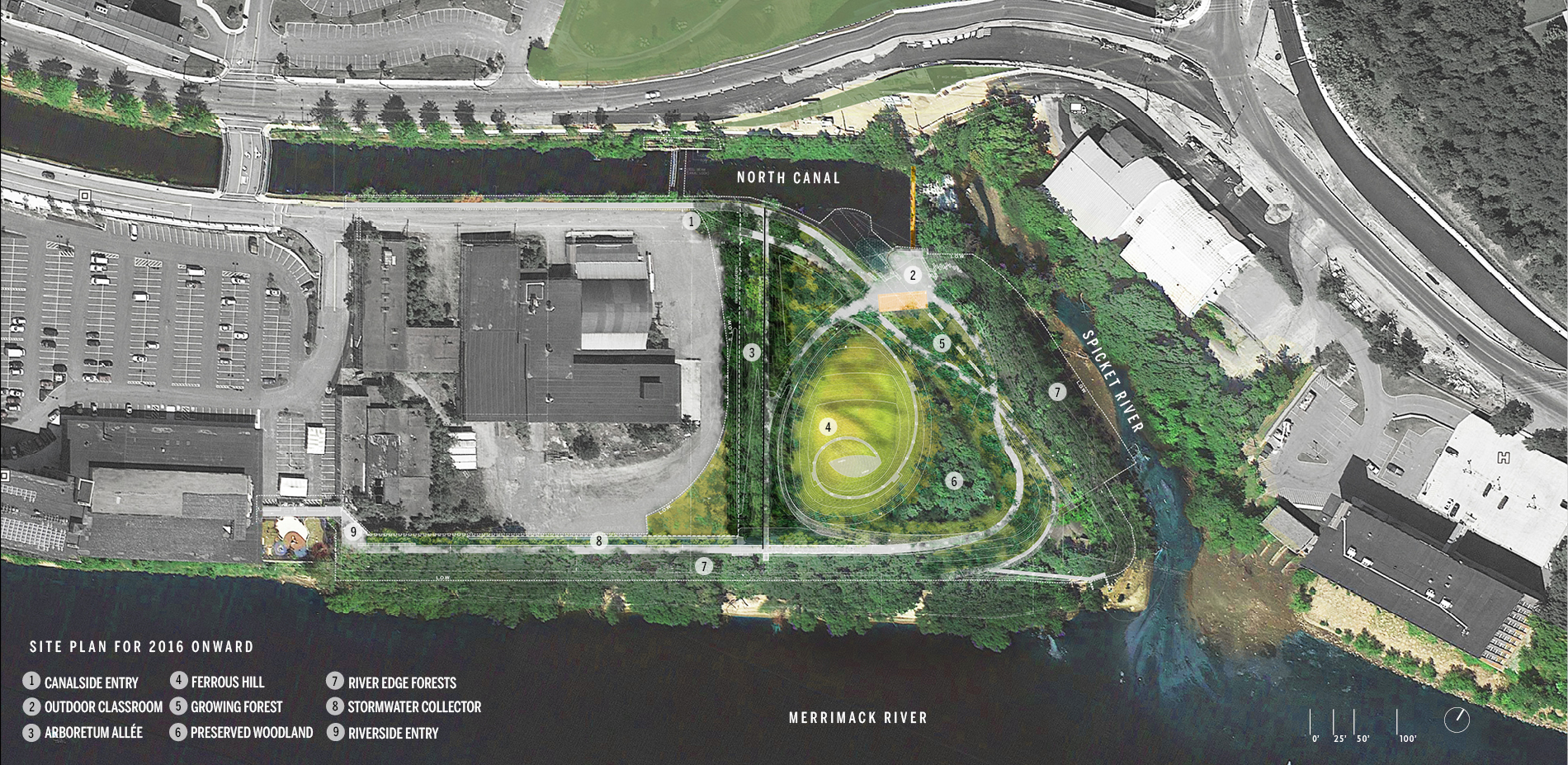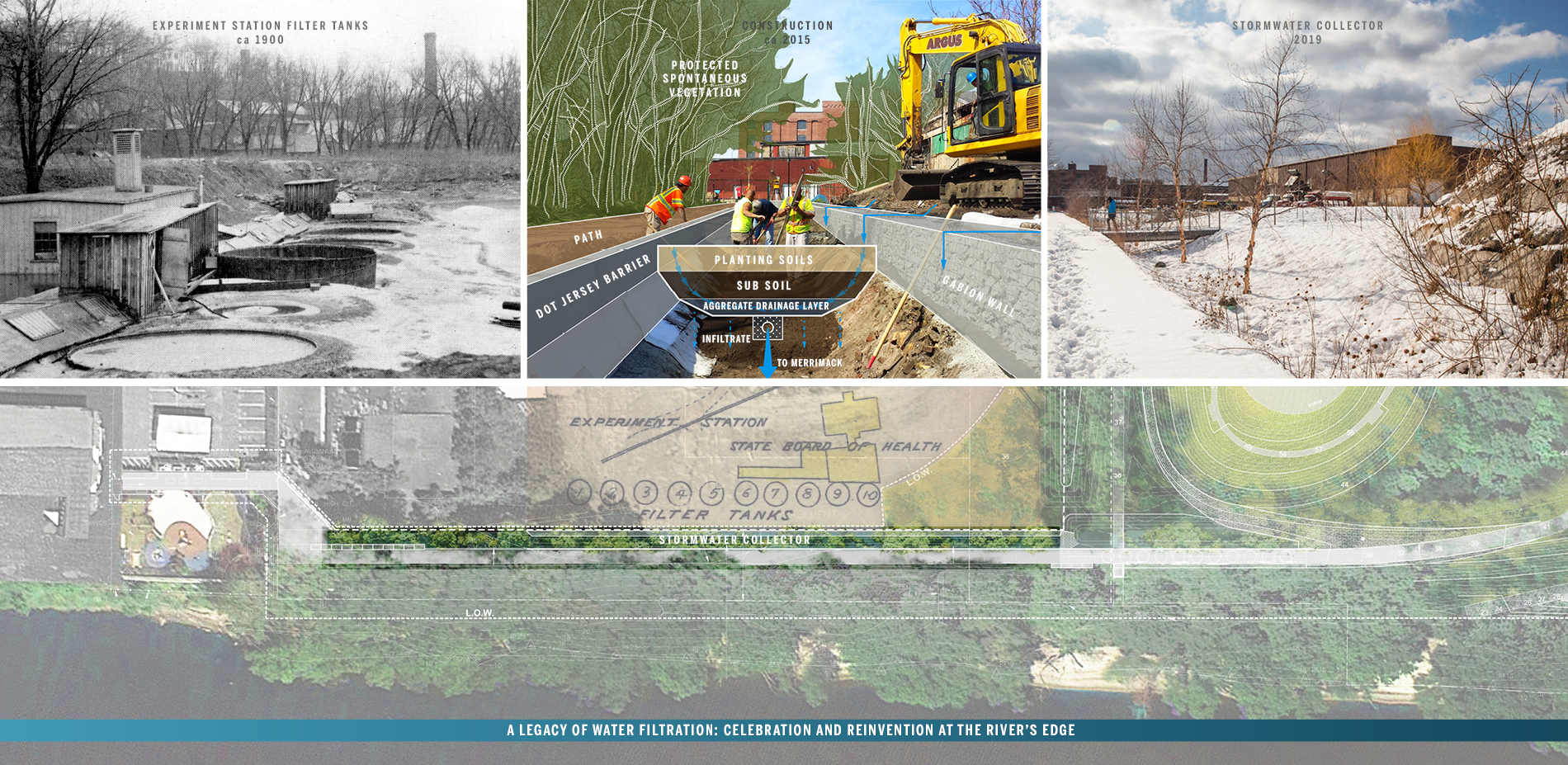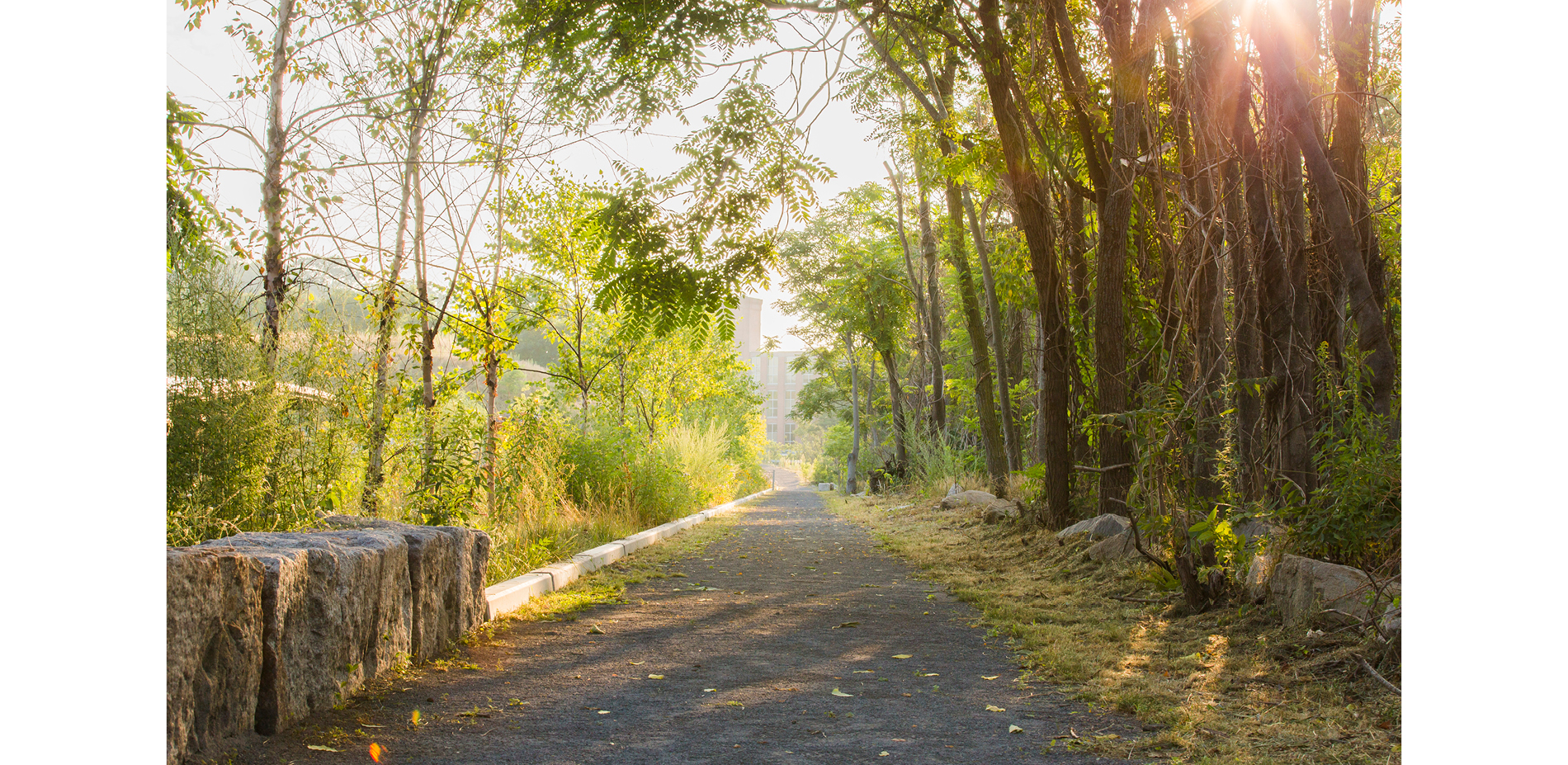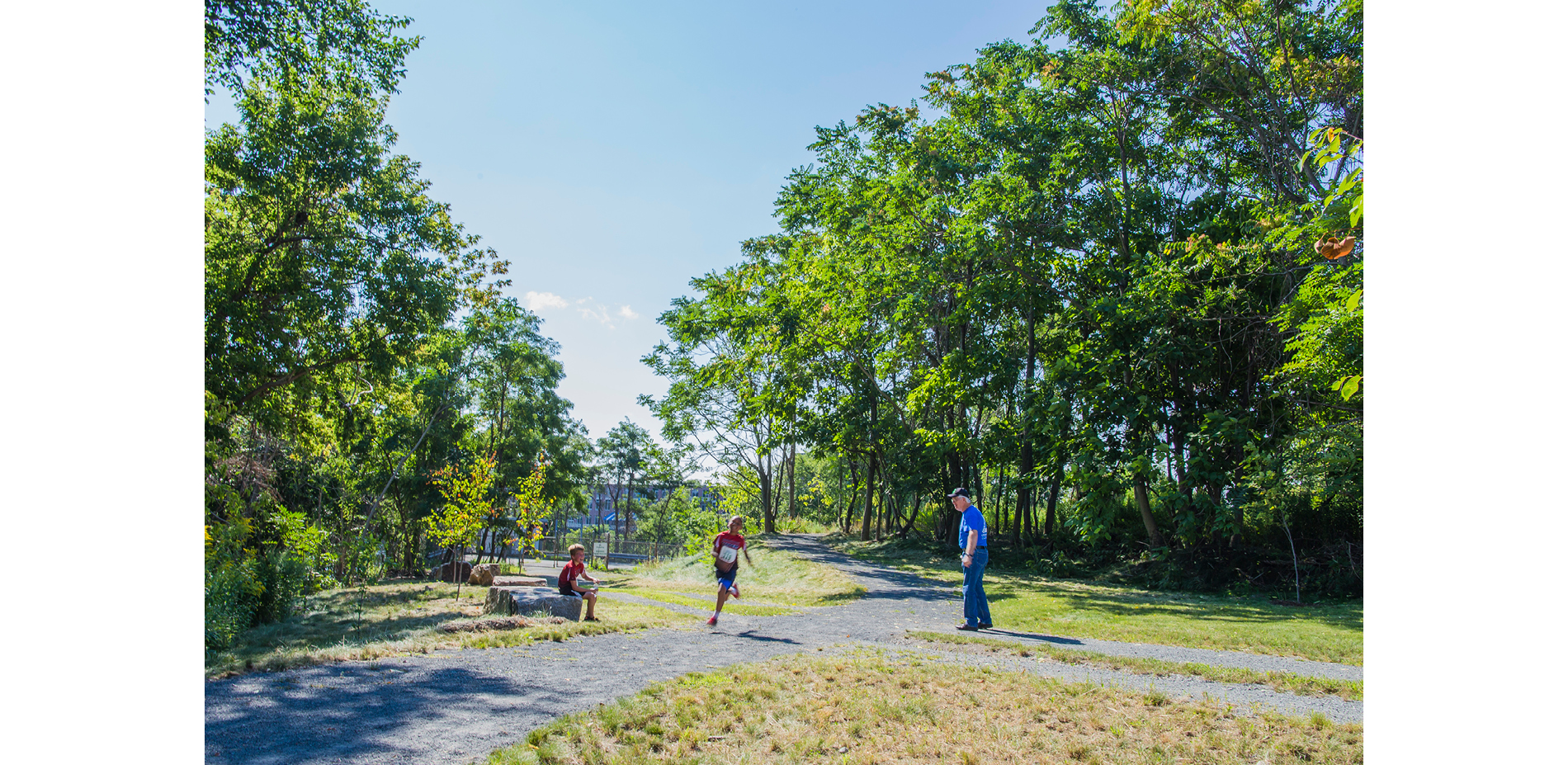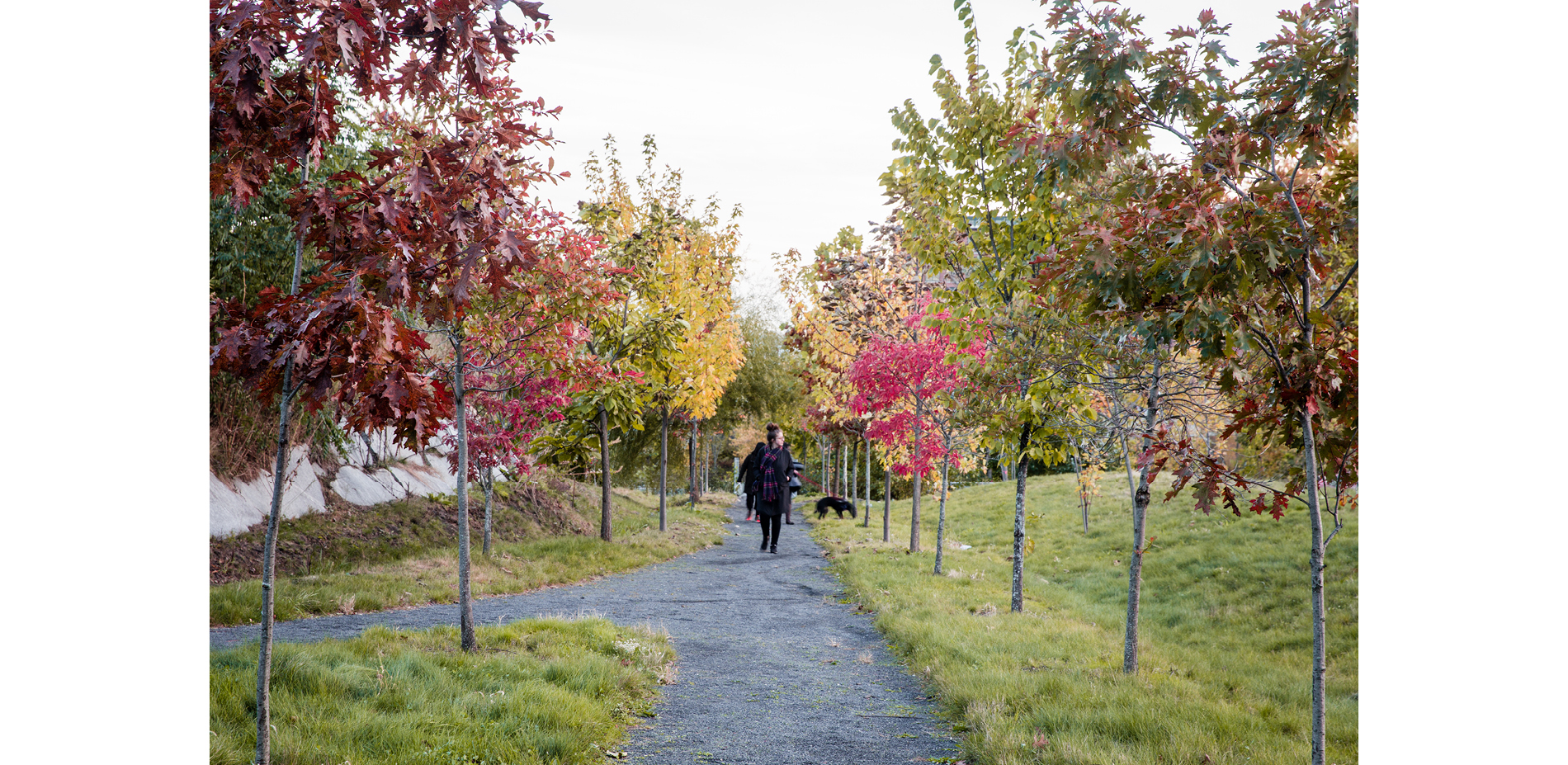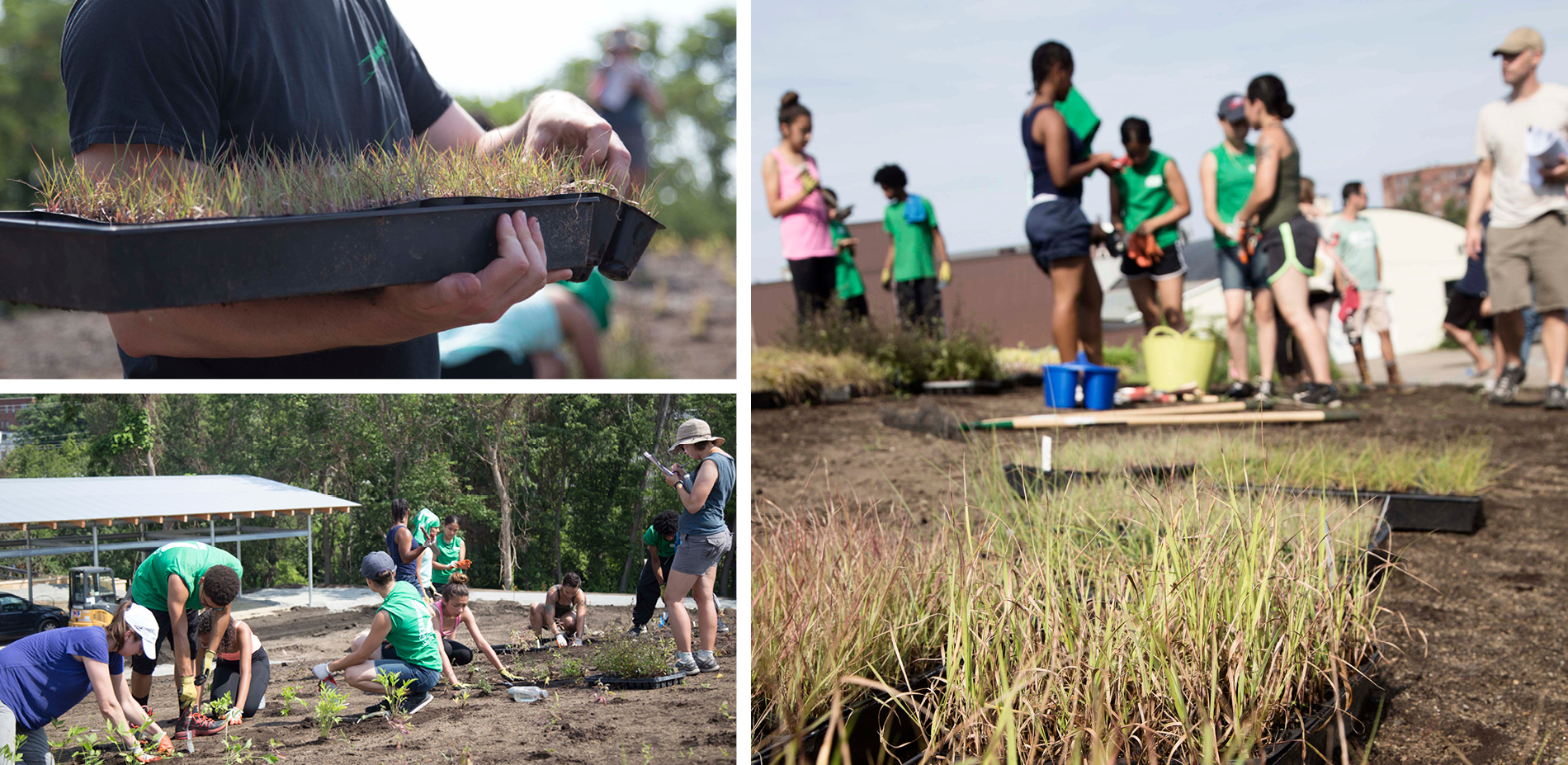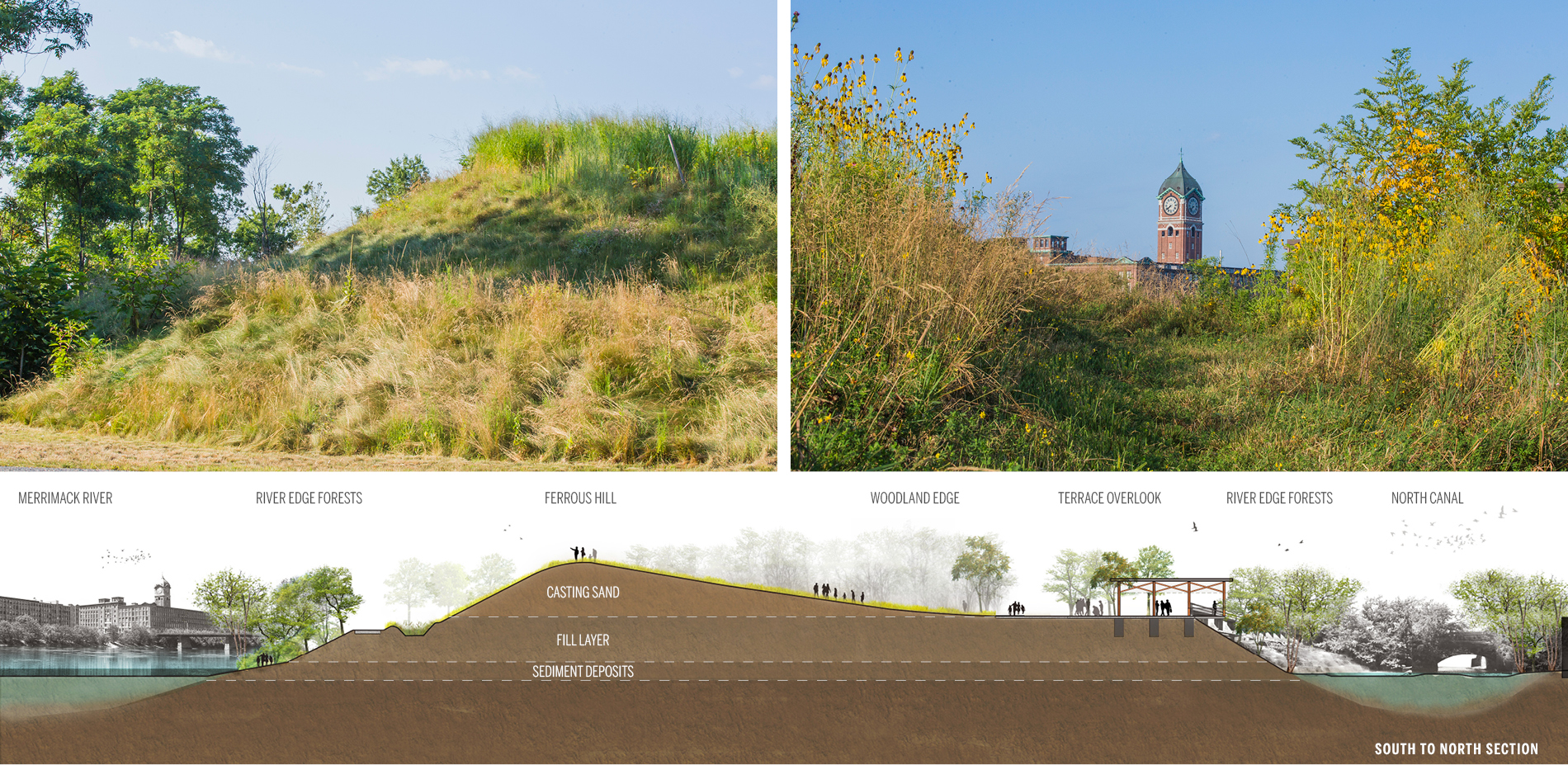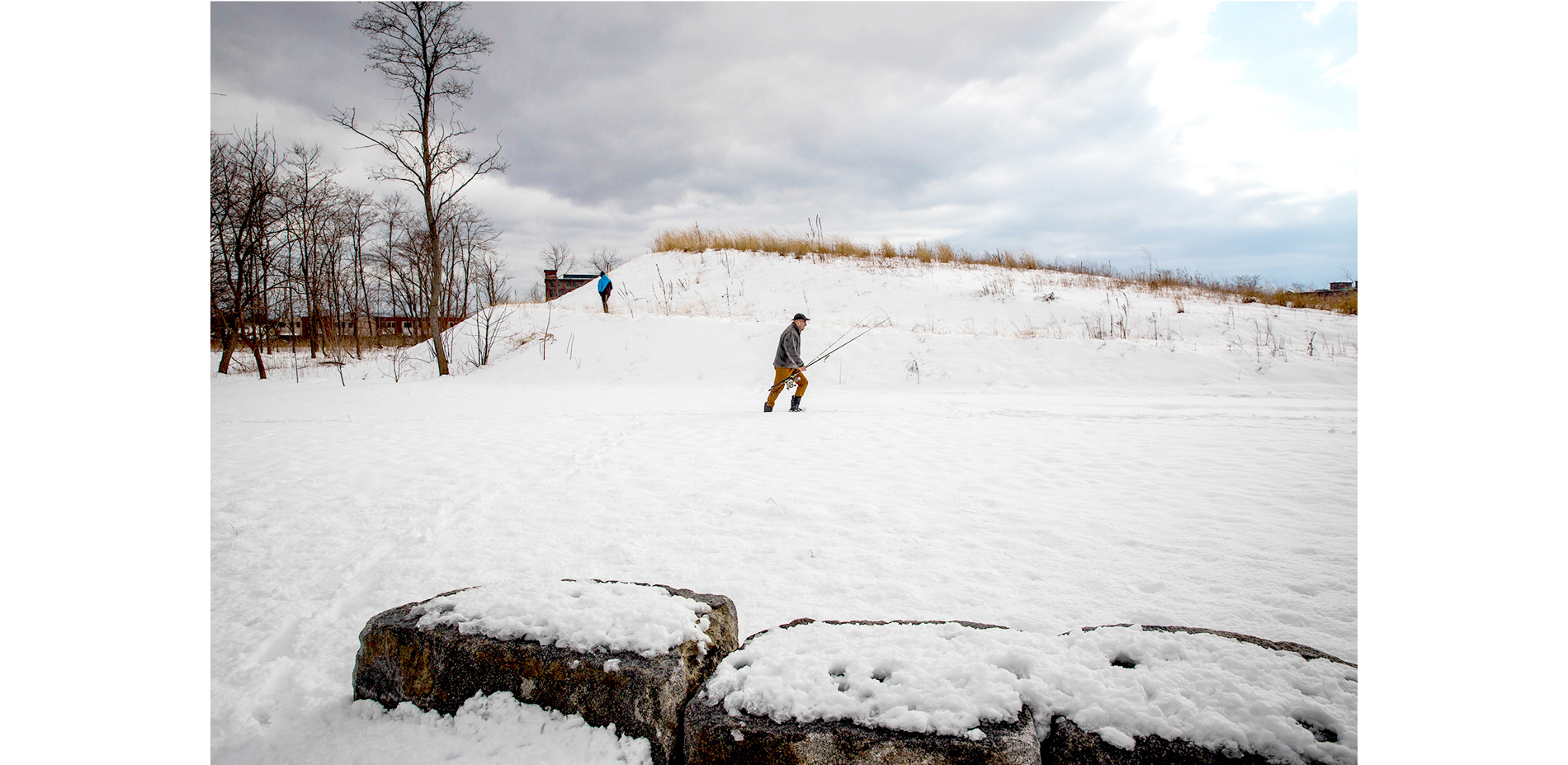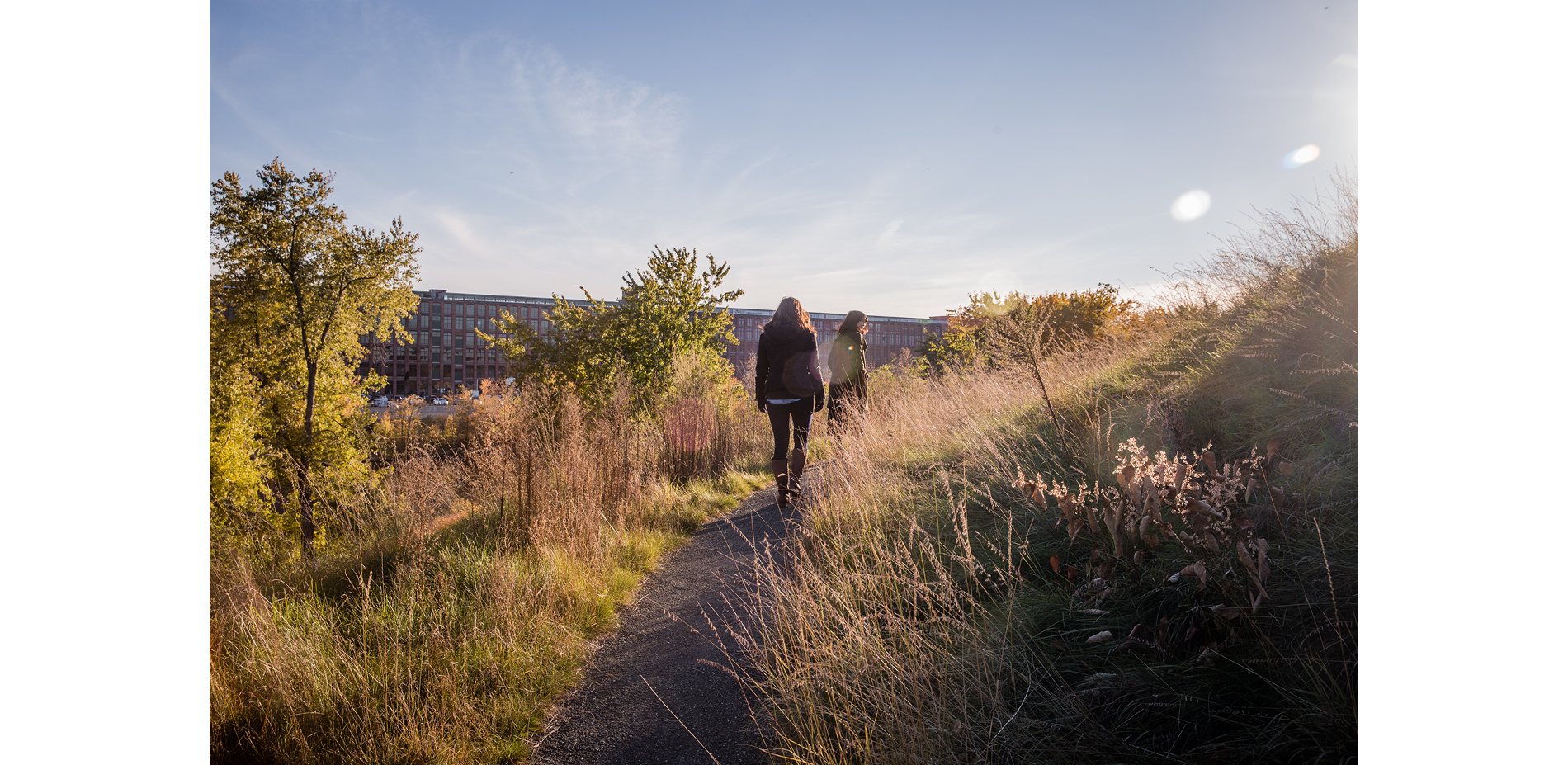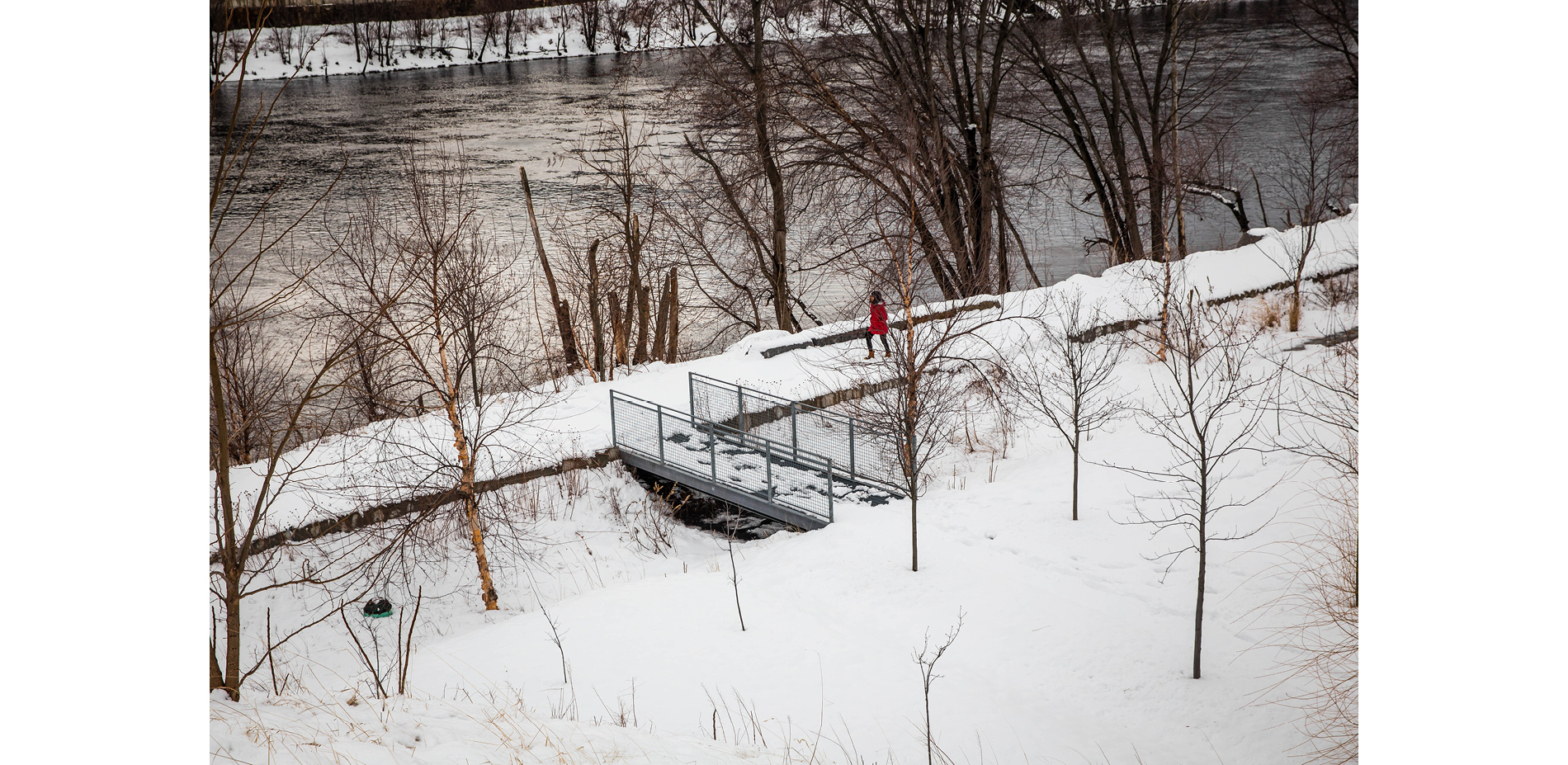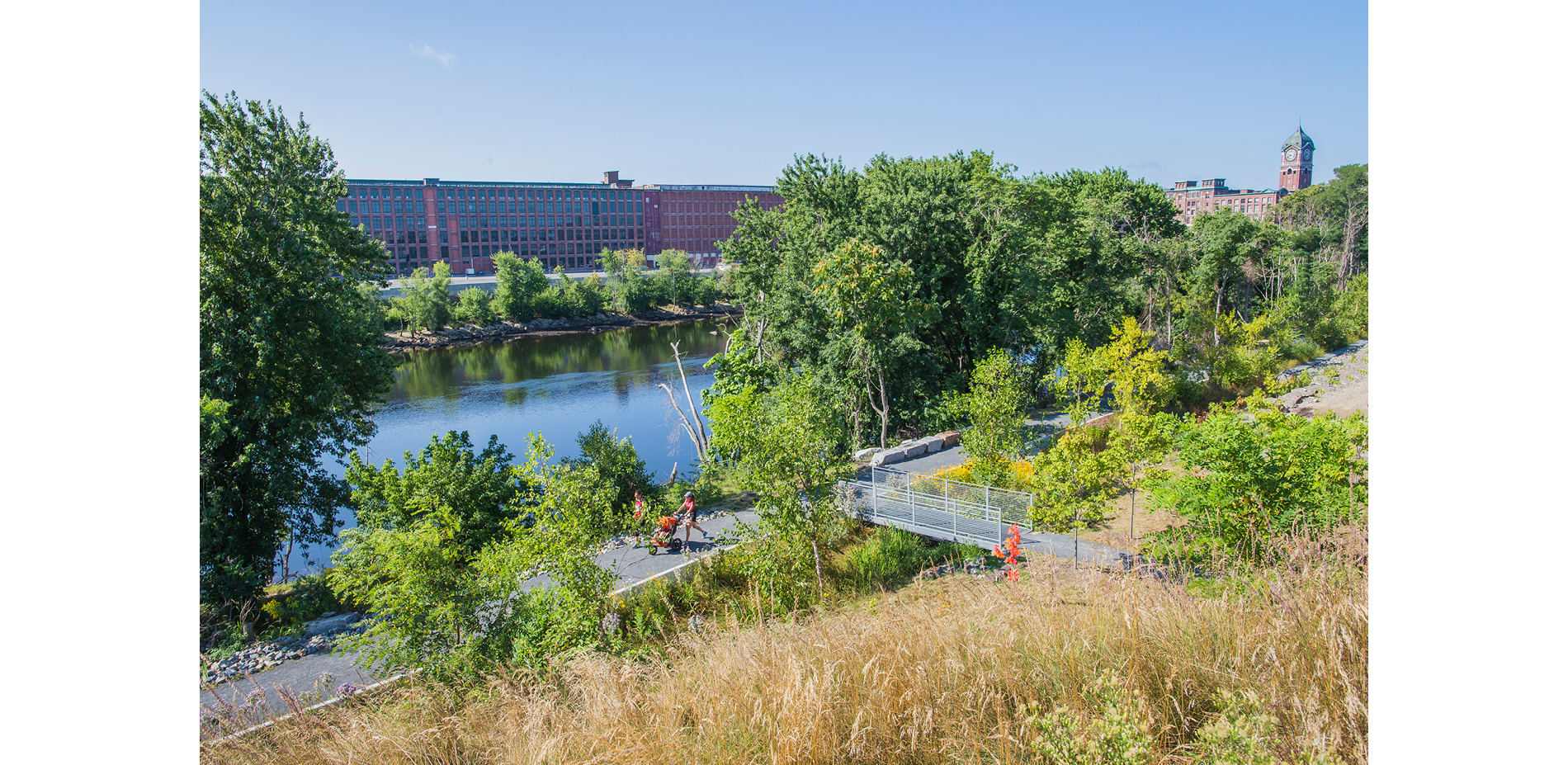Ferrous Foundry Park
Honor Award
General Design
Lawrence, Massachusetts, United States
STIMSON
Client: Groundwork Lawrence
At the confluence of the Merrimack and Spicket Rivers in Lawrence, Mass., Ferrous Foundry Park converts a post-industrial polluted brownfield site into a regenerated, vegetated, and populated urban park with a hint of wildness about it. Through deep community engagement, including river cleanup efforts, a vision for a connected sequence of riverfront parks emerged. Overlooking the river, what was once a mound of iron castings left behind by prior industry has become a sculpted meadow hill planted with fescue, oats, milkweed, asters, and more. Where native plants were already thriving, the designers encouraged that growth, allowing wild elements to coexist with and augment planned plantings.
- 2021 Awards Jury
Project Credits
Groundwork Lawrence, Community Based Partner
Ngoc Doan, Photography
Project Statement
Ferrous Foundry Park is located at the confluence of the Spicket and Merrimack Rivers in the North Canal Historic District of Lawrence, MA. The conversion of this industrial brownfield site to a public park—over 15 years in the making—was brought to fruition by a collaboration between the City of Lawrence and Groundwork Lawrence. When the design team was introduced to the project in 2014, industrial uses had ceased and the site’s unique spontaneous plant communities and mound of casting sands revealed exciting opportunities for the park to be reborn as an urban wild, celebrating its past and the power of nature to spontaneously revegetate a post-industrial site. Ferrous Foundry Park is an authentic representation of the City of Lawrence and a successful example of the power of design to transform a neglected, post-industrial site into a unique landscape experience. The Park illuminates the power of community engagement coupled with careful listening and interpretation by the design team to provide quality green spaces for underserved communities.
Project Narrative
CULTURAL HISTORY
Lawrence, Massachusetts, a mill city located 30 miles north of Boston, has a long history of extractive public and private systems that have segregated low-income communities of color and left the environment distressed and increasingly vulnerable to the impacts of the climate crisis. Created as a planned industrial community in 1848, Lawrence became known throughout the world for its textile and paper production. As the city rapidly industrialized in the late 1800s, it attracted immigrants from Europe and the Middle East. By the 1950s, deindustrialization had accelerated and migration from Puerto Rico increased dramatically. Today, over 40% of Lawrence residents were born outside of the United States, with a majority coming from the Dominican Republic and Central America. Most residents (82%) are people of color, including a large Puerto Rican population.
COMMUNITY ORGANIZATION
In 1996, a collaborative group of local stakeholders including textile manufacturers, property owners, city officials, community-based organizations, and residents worked with the National Park Service to create Groundwork Lawrence. Building from the foundation of a feasibility study, the group utilized a precise, people-centered model for the siting and development of greenspaces and the restoration of the natural environment in urban areas. From conception through long-term programming and stewardship, stakeholders have been empowered to collaborate and make decisions about the future of their community. In projects that range from coordinated tree planting to the development of a riverfront greenway, Groundwork Lawrence has supported projects with frank and transparent discussions about community history. This model of engagement is reestablishing residents’ relationship to their built and natural environment.
Efforts to restore the Spicket River, a small Merrimack tributary, demonstrate Groundwork’s commitment to a people-centered approach to build civic pride and recognition for the site’s potential. The immediate needs were obvious. The river had been a dumping ground, and residents wanted to clean it up. In 2002, Groundwork organized The Spicket River: Keep it Clean campaign, the first ever large scale Spicket River clean-up effort. Groundwork also developed partnerships with state and local agencies, as well as business owners and local institutions, to collaboratively plan for and create the Spicket River Greenway, a 3.5-mile network of new riverfront parks connected, where possible, by an off-street path. The creation of the Ferrous Foundry Park is the culmination of this effort.
SITE HISTORY
During the 19th and 20th centuries, the Ferrous Site and Lawrence’s industrial complex severed the community from the Merrimack River, harming both the environment and the people of Lawrence. In the late 1880s, this degraded site became the home for the Lawrence Experiment Station, one of the first water quality testing and environmental research laboratories in the world.
In the 20th century the site was occupied by Ferrous Technologies, a foundry that used sand castings to produce iron products for Lawrence’s mill factories. The foundry used the land as a dumping ground for the discarded burnt orange sand castings. When industrial operations ceased in the late 1990s, Ferrous Technology left behind dilapidated buildings and a mound of contaminated casting sand.
The site’s role in the community changed dramatically in 2014 when Groundwork Lawrence acquired almost 5 acres of land and easements to establish a park. Groundwork raised the site’s profile through extensive youth engagement, with a Young Architects group creating early designs, the Green Team completing the Rapid Ecological Assessments, and 200-300 young people participating annually in the Spicket River Cleanup. Groundwork’s youth engagement at the site prior to park development cultivated strong public support for the project.
COMMUNITY GOALS
Community excitement for the project, combined with the site’s spontaneous plant communities and the mound of casting sands, revealed unique opportunities for the park to be reborn as an urban wild. The design team imagined a place informed by its industrial past that illustrates the ability of the land to spontaneously restore itself. The site’s re-birth would symbolize the community’s ability to heal and thrive.
The community’s goal was to reconnect with the rivers and the site through passive- and active-use programming for all. Prior to becoming a park, the site had been used for hikes, access to the rivers, youth group outings, and a fishing spot for the community. It had also been a place for illicit activities and dumping, and served as the location for the Greater Lawrence Sanitary District’s combined sewer outfall.
The design for Ferrous Foundry Park recognizes the layered histories of Lawrence, the community, the site’s uses, and the vigor of nature to heal.
SITE CONDITIONS
Dense communities of spontaneous vegetation inspired a strategy centered around management, preservation, and expansion of existing plants. The design required careful consideration of the sand castings mound straddling the park’s property line. Project guidelines and environmental regulations required the mound to be fully on the site. The design team, comprised of the community, landscape architects, botanists, licensed site professionals, soil scientists, and civil and structural engineers, identified key areas for preservation, clearing, and reintroduction of adapted plant communities. They exhaustively explored earthwork studies to understand the volume of sand that needed to be moved and how to sensitively integrate its total volume into the design while preserving as much spontaneous growth as possible. The team chose to strengthen the sand-casting mound as both a monumental landform and a focal point of the site, sculpting the sand into a 30 foot tall meadow hill, with accessible paths and a promontory terrace providing views of the City and surrounding waterways.
ADAPTED PLANT COMMUNITIES
The plan proposed diversification of the plant communities and species in areas disturbed by the earthwork required to move the sand castings. The introduced plant palette builds on the spontaneous species already found on site, as well as other regionally appropriate and adapted species. The arboretum allee includes maples, sycamores, catalpa, and elm, while the site’s stormwater collector was planted as a long corridor of river birches mirroring naturally occurring river birch along the Merrimack shore. At the meadow hill, the extreme slopes were planted with a seed mix of oats, sideoats grama, and red fescue. On the accessible face of the mound, a path cuts through the didactic pollinator meadow, comprised of bands of forbs, to the top of the mound. A mosaic of sumacs—winged, staghorn, and smooth sumac—were planted amongst the stone riprap armoring. The sum of the site planting is an amplification of the spontaneous vegetation and diversified plant communities. By incorporating the casting mound and existing plants, the design creates an immersive environment that will heal a critical brownfield site along the banks of one of New England’s largest rivers.
SITE SYSTEMS
The City of Lawrence’s sanitary and stormwater systems are combined with an outfall facility located on the Park’s site. The project required the reduction of stormwater runoff rates to prevent CSO overflows into critical habitats. A design goal was to visibly demonstrate performative measures that would eliminate these events. The design team engaged the Greater Lawrence Sanitary District to inform the design and develop demonstrable strategies that could be implemented throughout the District.
Ferrous Foundry Park’s drainage infrastructure recalls the site’s experimental water quality research history. Running parallel to the Merrimack River, a 430-foot Stormwater Collector captures runoff from an adjacent industrial site and the Park. Through the Collector, water is channeled into a bioretention area planted with sedges and perennials, which filter pollutants and capture sediments before infiltrating and draining to the Merrimack.
A PARK FOR THIS COMMUNITY
Ferrous Foundry Park is an authentic representation of the City of Lawrence and a successful example of engaging stakeholders in a collaborative process to transform a neglected, post-industrial site into a unique landscape experience. The Park illustrates the power of community engagement, coupled with careful listening and interpretation by the design team, to provide quality green spaces for underserved communities.
Plant List
- Acer rubrum, Red Maple
- Acer negundo, Box Elder
- Acer saccharinum, Silver Maple
- Amelanchier arborea, Serviceberry
- Betula nigra, River Birch
- Catalpa speciosa, Catalpa
- Comptonia peregrina, Sweetfern
- Juglans nigra, Black Walnut
- Morus alba, Common Mulberry
- Nyssa sylvatica, Black Tupelo
- Populus deltoides, Cottonwood
- Prunus serotina, Black Cherry
- Quercus rubra, Red Oak
- Rhus aromatica, Fragrant Sumac
- Rhus copallina, Winged Sumac
- Rhus glabra, Smooth Sumac
- Rhus typhina, Staghorn Sumac
- Robinia psuedoacacia, Black Locust
- Tilia americana, American Linden
- Ulmus americana ‘Jefferson’, Jefferson American Elm
- Avena sativa, Oats
- Bouteloua curtipendula, Sideoats Grama
- Festuca rubra, Red Fescue
- Eragrostis spectabilis, Purple Lovegrass
- Panicum virgatum, Switchgrass
- Schizachyrium scoparium, Little Bluestem
- Sporobolus heterolepis, Prairie Dropseed
- Asclepias syriaca, Common Milkweed
- Cichorium intybus, Chicory
- Echinacea purpurea, Purple Coneflower
- Lupinus perennis, Wild Blue Lupine
- Monarda fistulosa, Wild Bergamot
- Pycnanthemum tenuifolium, Narrowleaf Mountainmint
- Penstemon digitalis, White Beardstongue
- Echinacea paradoxa, Yellow Coneflower
- Symphyotrichum leave, Smooth Aster
- Symphyotrichum laterifolium, Calico Aster
- Carex vulpinoidea, Fox Sedge
- Iris versicolor, Blue Flag Iris
- Juncus effusus, Soft Rush

